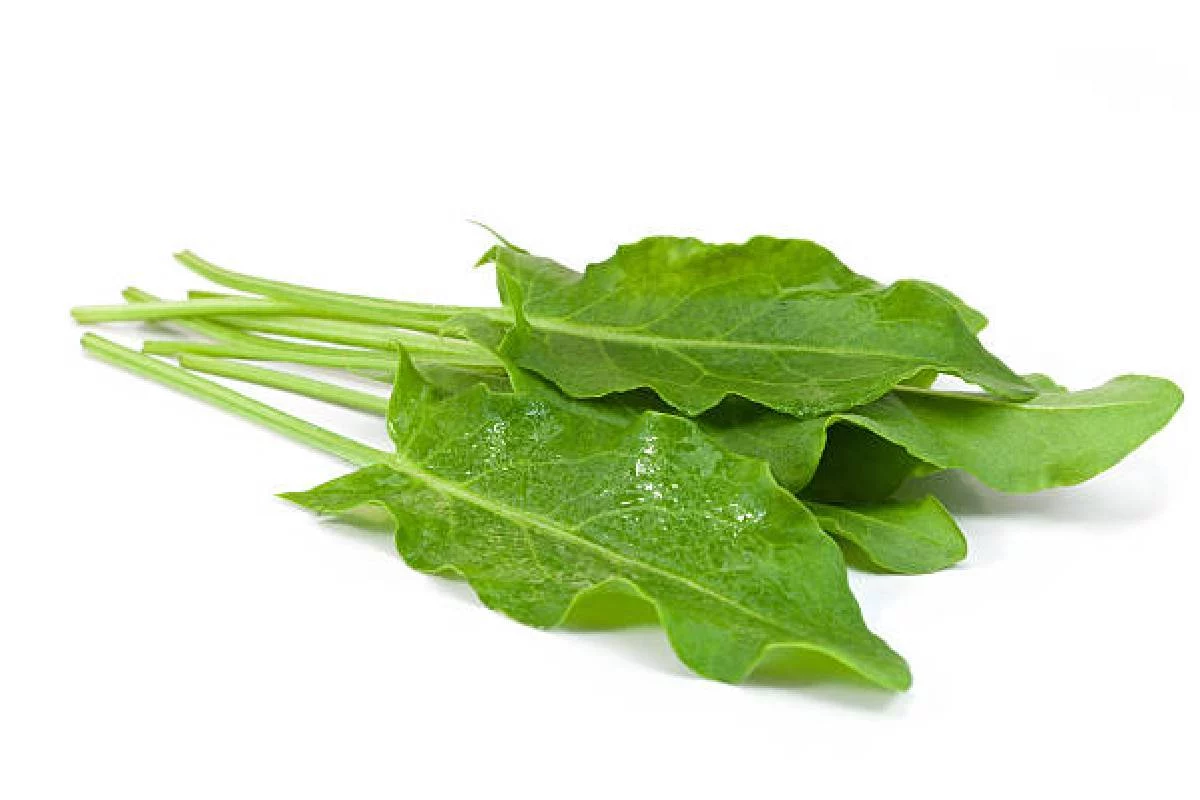A leafy green known as sorrel is frequently sold at farmers’ markets, especially in the spring or summer. Salads, stir-fries, marinades, soups, and casseroles can benefit from its use. It goes nicely with cheese, cream, yogurt, and seafood.
What Is Sorrel?
It is a leafy green plant with a unique sour, lemony flavor. It is used both as a vegetable and a herb. Belongs to the same botanical family as buckwheat and rhubarb, the Polygonaceae, or the knotweed family. It is also known as “dock.”
Types of Sorrel
It comes in a number of types that can be purchased at farmer’s markets.
Common Sorrel – Rumex acetosa.
- The variety that is most easily found at markets and nurseries for planting is the common sorrel
- It is a deep-rooted perennial that will live for a very long time.
- It has rather large, arrow-shaped leaves and a strong flavour.
French sorrel – Rumex scutatus
- You may occasionally see Rumex scutatus at markets because it is also farmed.
- It has smaller, more rounded leaves than typical sorrel.
- It has a milder flavour.
Red-veined sorrel (Rumex sanguineus)
- As you may have probably guessed, the leaves of red-veined sorrel (Rumex sanguineus) contain vibrant red veins.
- It doesn’t have any of the tartness that is typically associated with this plant
- It has a very mild, almost un-sorrel-like flavour. It is noticeable in a salad.
Sheep’s sorrel (Rumex acetosella)
- In many parts of the United States, sheep’s sorrel (Rumex acetosella) grows naturally.
- It has smaller leaves than typical sorrels but is roughly as sour.
- Instead of being grown, it is foraged.
How Does it taste?
The flavour of sorrel is incredibly fresh and acidic. Its sour flavour is perhaps why so many people compare it to the flavour of lemons. Since the lemon flavour is combined with a strong grassy flavour. Working with it can be challenging.
How It Can Be Used
It is positioned directly between greens and herbs. Use it as a leafy herb similar to parsley, basil, or mint, slice it up to use in marinades and sauces. It adds some fresh taste into soups or casseroles. The fragile leaves can be used by slicing them into salads and stir-fries.
Its tangy and vibrant flavour makes it very effective in giving whole grains, potatoes, and eggs some flavour. Salmon or mackerel, which are both smoked or oily seafood, pair particularly well with it. Traditional pairings with sorrel include cream, sour cream, or yoghurt. The sorrel’s harsh flavour is softened by the fatty creaminess of these simple products, giving them a vivid green hue and tartness.
Substitute For Sorrel
If you do come across a dish that calls for sorrel and wish to find a replacement, all you have to do is add some lemon juice or lemon zest. Sorrel can be be substituted with mustard greens, arugula, rhubarb, and even spinach when added to a squeeze of lemon juice.
Storage
Simply store it loosely wrapped in plastic in the refrigerator if you intend to use it within a day or two. To store leaves for a longer period of time, clean them thoroughly, pat them dry, and then roll them in paper towels before putting them in the plastic. Paper towels will absorb any extra liquid, keeping the leaves simultaneously dry and in an adequately damp atmosphere. If you intend to use greens frequently, learn how to wash and preserve them.
If you have more than you can use, sauté the leaves in some butter until they begin to wilt and crumble. The outcome will resemble a purée. To add flavour to soups or stews, freeze this purée.
